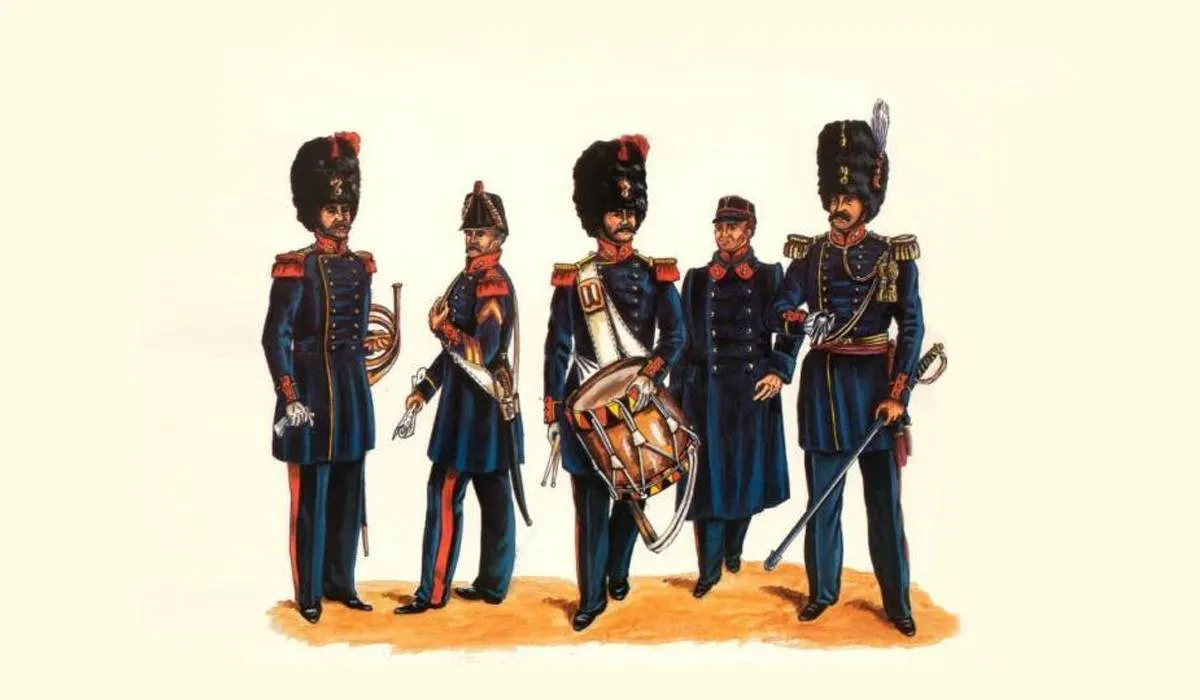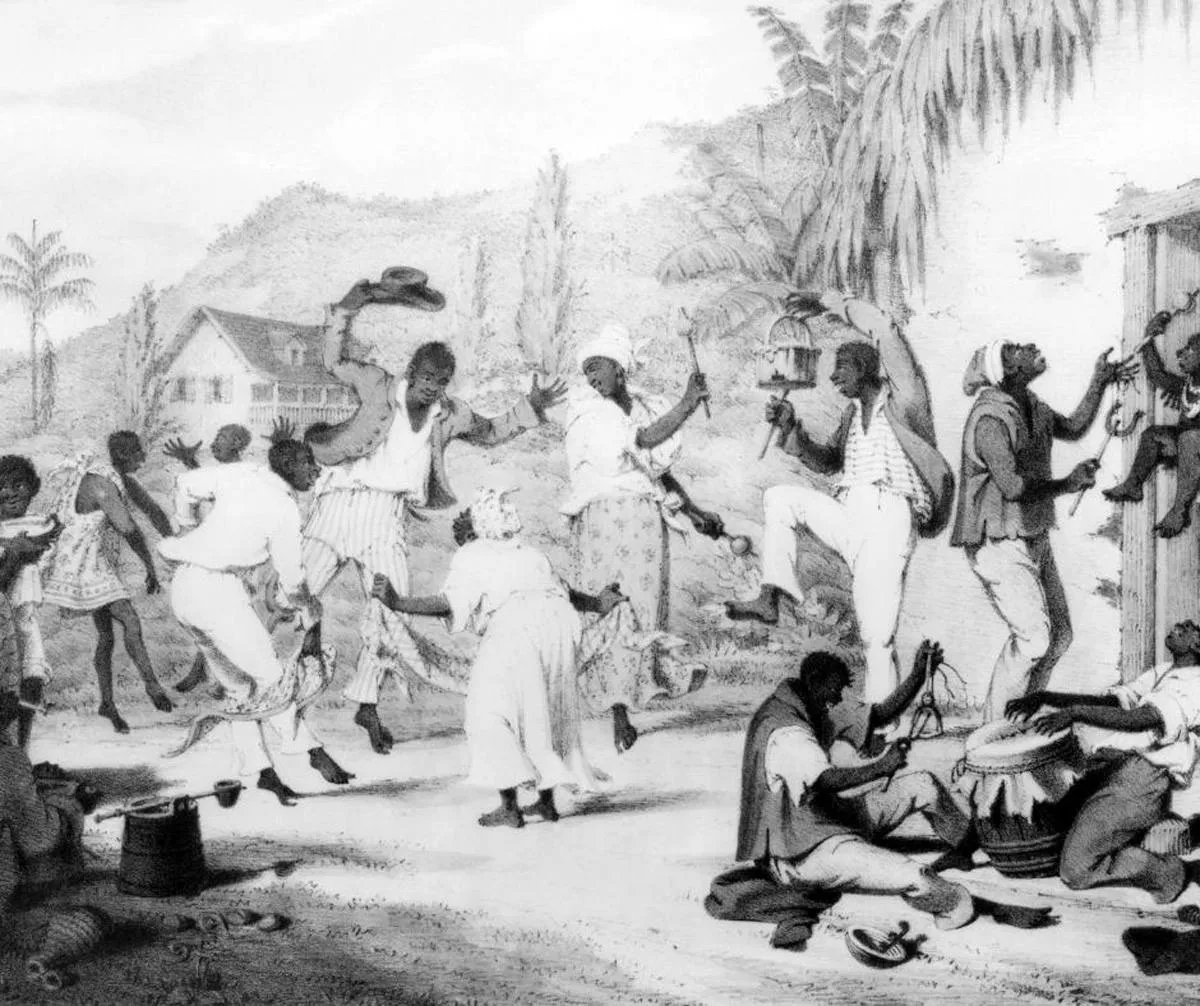Military music

Civic and religious holidays are scrupulously respected. Thus, in a strict ceremonial one first found the cavalry trumpets, then the drum major on the Place de la Savane to the rhythm of the military marches. Then followed the horses of the cavalry, then the regiments of the Navy and the Infantry on symphonies performed by their musicians, then the militia, preceded by its two black drums.
All the procession then heads to the parish of the Whites, where a high mass is sung with musical interludes, and the military band performs symphonies. Later, at the Governor's Hotel, administrators and notables wear health in honor of the King while the trumpets play “the Ordinance”, that is to say, the royal hymn.
Religious music
Given that the power was by divine right and that the islands were acquired to bring faith there, the musicians of the Infantry or the Cavalry are at all official, solemn masses, always followed by Te Deum, the hymn symbolizing both political and religious power. The interpreted works remain unknown.
For their daily service, some religious groups had brought their cantors with them. Others called on the colonists who could take care of them. There was emulation between White and Black cantors. Each ethnic group had its mass. During this, one hundred slaves were standing, changing the principles of catechism and prayers in French.
Religious ceremonies in Martinique were no different from those that could be seen in Paris. The missionaries made sure they had the same solemnity. The colonial system in place forced slaves to execute them as well as those in the metropolis. Thus, we found motets, hymns, and sacred stories, accompanied by instruments such as the flute, the violin, the oboe, or the organ. Moreover, the emphasis was on hymns, sacred stories accompanied by instruments in the beginning.
In the 18th century, it seemed necessary to have a performance hall where different artists could perform. This idea is also supported by the authorities and praised by the actors and musicians of Europe. A performance hall has also become essential:
There are no public walks or places to meet. This reunion is more necessary than one might think: it establishes links between individuals; it remedies the drawbacks of the isolated life that everyone leads, it polishes.
Slaves and music
Arriving from Africa from the 17th century, slaves were servile labor in the plantations of Martinique. They get there with their culture, music, instruments, songs, and dances.
The music of the slaves, seen as one of the engines of the sugar economy, was also a factor in social peace. However, the Church strongly repressed gatherings where the slaves indulged in dances and songs because it saw celebrations in honor of the pagan gods. The masters, on the other hand, saw them as a means of preparing plots against them and future rebellions.
The animist gave a very large place to sacred dances and songs, and these remained the last anchors of the slave with the lands from which he had been torn. It was the link between all slaves, regardless of their origin. Each community in Africa was governed by a parent company, which itself brought together sister companies. Each of these had its rites, songs, and dances.
The rhythms, songs, and dances were inseparable. Music was the preferred language. Of divine origin, the African attributes all the merits to him.

Music from Africa was a culture of "savages" for the local elite, inferior, devoid of any artistic sense, unlike French music and that of the Creole bourgeoisie (Whites born in the West Indies), who were "scholarly music”. Also, in the descriptions of the time, the dances and songs of the slaves were described by the writers of the time (often members of the clergy or educated people) as dark moments of madness, disorderly gatherings. Yet it appears that at the time, strongly imprinted with their native Africa, slaves and descendants of slaves appreciated these moments when they could come together and remember their lands from which they had been torn.
